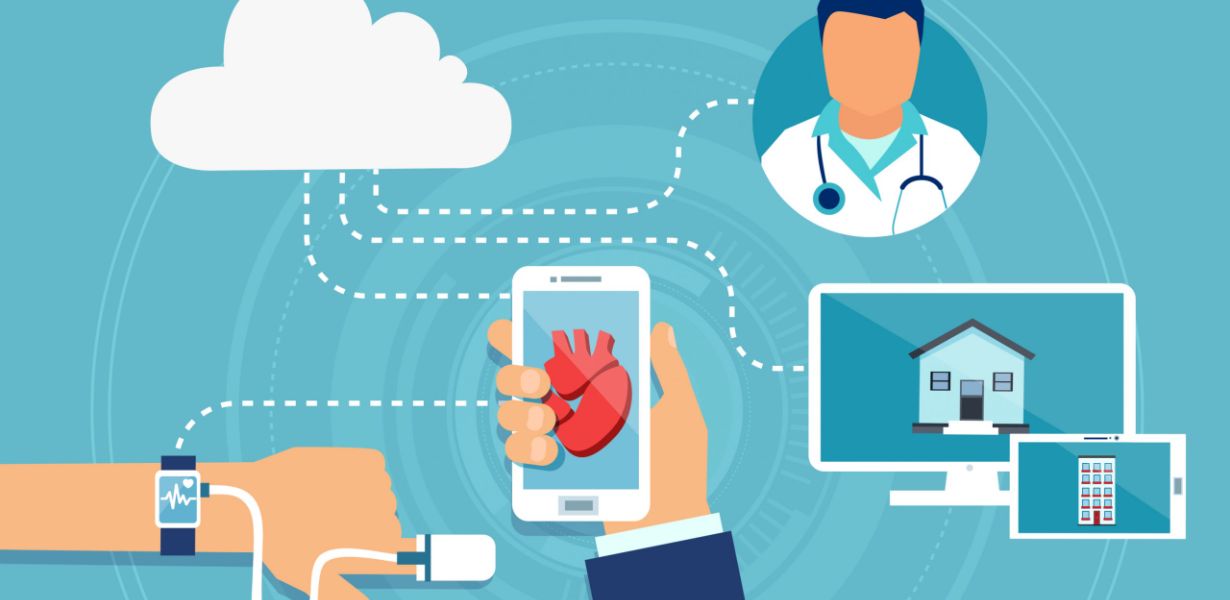
Empowering Healthcare: Wearable Tech’s Vital Role in Remote Patient Monitoring
- Post
- August 8, 2023
- Ad Serving Tech, Case Studies, Real-time Bidding
- 0 Comments
In today’s ever-evolving landscape of healthcare, technological advancements are steering the industry towards new horizons. Among these, wearable technology has emerged as a powerful tool, revolutionizing patient care and remote monitoring. This blog delves into the significance of wearable tech in remote patient monitoring, unraveling its impact on healthcare outcomes, patient engagement, and the overall landscape of medical interventions.
The Convergence of Healthcare and Technology
Wearable technology, once confined to fitness trackers, has transcended its original purpose. It now holds the potential to redefine healthcare delivery, particularly in the realm of remote patient monitoring. Through a seamless integration of sensors, connectivity, and data analysis, wearables empower healthcare professionals to monitor patients’ vital signs and health metrics remotely.
Transforming Patient-Provider Dynamics
One of the most notable contributions of wearable tech is its role in reshaping the dynamics between patients and healthcare providers. Traditional healthcare models often lacked real-time insights into patients’ conditions between appointments. Wearable devices bridge this gap by providing continuous data streams, enabling proactive interventions and personalized treatment plans.
Realizing the Power of Data
Wearable devices collect an array of data points, ranging from heart rate and sleep patterns to activity levels and even electrocardiograms. This influx of real-time data equips healthcare practitioners with a comprehensive understanding of patients’ well-being. Informed by data-driven insights, medical decisions become more accurate and tailored to individual needs.
Enhancing Disease Management
For patients with chronic conditions, wearable tech holds immense promise. Take diabetes management as an example. Continuous glucose monitoring through wearables offers patients real-time visibility into their blood sugar levels. This empowerment facilitates proactive lifestyle adjustments and medication management, leading to better outcomes and an improved quality of life.
Unveiling Early Detection
Early detection is often the key to successful medical interventions. Wearable devices equipped with advanced algorithms can identify subtle deviations from baseline health indicators. For instance, irregular heartbeats indicative of arrhythmias can be promptly flagged, prompting timely medical attention and potentially averting life-threatening situations.
Navigating the Regulatory Landscape
As wearable technology becomes deeply intertwined with healthcare, regulatory considerations come to the forefront. Ensuring data privacy, accuracy, and adherence to medical standards is paramount. Regulatory bodies are continuously working to establish guidelines that govern the development, deployment, and usage of these devices to guarantee patient safety and data security.
Case Studies: Realizing the Impact
Several real-world examples underscore the transformative influence of wearable tech in healthcare. The partnership between a renowned research hospital and a tech company yielded a wearable ECG monitor that detected atrial fibrillation with impressive accuracy. Another collaboration resulted in a wearable device that alerts epileptic patients and caregivers about impending seizures, facilitating timely interventions.
The Synergy of AI and Wearables
Artificial Intelligence (AI) amplifies the capabilities of wearable technology. AI algorithms can process vast amounts of data, identifying patterns that might escape human observation. This symbiotic relationship enhances the accuracy of diagnostics, personalizing treatment approaches, and predicting potential health issues.
Challenges and Future Trajectory
While the potential of wearable tech in healthcare is substantial, challenges persist. Interoperability, standardization, and integration with electronic health records demand attention. Additionally, addressing issues of affordability and accessibility will determine the equitable distribution of these innovations. Looking ahead, advancements in materials, battery life, and AI algorithms will likely shape the trajectory of wearable technology.
Final Words
In the convergence of healthcare and technology, wearable devices have emerged as catalysts of change. Empowering patients, redefining patient-provider interactions, and ushering in a new era of data-driven healthcare interventions, wearables are at the forefront of modern medical innovation. As we stride forward, it is not just a matter of technological evolution; it’s a testament to the power of innovation to reshape the very foundations of healthcare.
Commonly Asked Questions
Q1: How do wearable devices enhance patient engagement?
Wearable devices provide patients with real-time health data, fostering engagement by allowing them to actively monitor and manage their conditions. This proactive involvement empowers patients to make informed decisions about their health.
Q2: What role does data privacy play in wearable tech?
Data privacy is paramount in wearable tech. Manufacturers must adhere to stringent data protection standards to ensure that patients’ sensitive health information remains secure and confidential.
Q3: Can wearable tech replace traditional medical check-ups?
While wearable tech offers continuous monitoring, it’s not a substitute for comprehensive medical check-ups. It complements healthcare by providing a consistent stream of data between appointments, enabling timely interventions.
Q4: How can wearable tech benefit elderly patients?
Wearable tech can significantly benefit the elderly by monitoring vital signs, detecting falls, and assisting in medication management. It provides an added layer of safety and empowers seniors to maintain their independence.
Q5: What’s the future of wearable technology in healthcare?
The future holds immense promise for wearable technology in healthcare. With advancements in AI, sensor technology, and data analysis, wearables will continue to play a pivotal role in early detection, disease management, and personalized treatment approaches.




